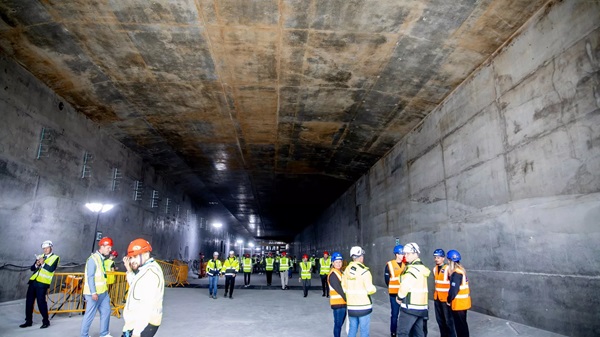Denmark’s Fehmarnbelt tunnel which is set to reduce travel times between Scandinavia and Central Europe from 45minutes to seven minutes by train was flagged off by King Frederik X of Denmark.
Denmark and Germany are one step closer to being linked by the world’s longest underwater rail and road tunnel. The first element of a future 18-kilometre tunnel under the Baltic Sea will link southern Denmark to northern Germany and contribute to the transport sector’s green transition.
The tunnel will consist of 89 concrete elements which are being constructed at a special facility in Roedbyhavn on Lolland, dubbed North Europe’s largest construction site.
The Fehmarn link will cost 55.1 billion kroner (€4.8 billion) and will be paid by users in Denmark. The Danish government will decide the toll charge for the tunnel at a later stage.
In recent years Denmark has built road-and-rail links to neighbouring Sweden and between two major Danish islands.
In 2000, a bridge-and-tunnel link across the Oresund strait connected Copenhagen to Sweden’s third largest city Malmo, and in 1998, road traffic opened between the islands of Funen, where Odense – Denmark’s third largest city – is located, and Zealand, where Copenhagen sits. Train traffic there started a year earlier.

